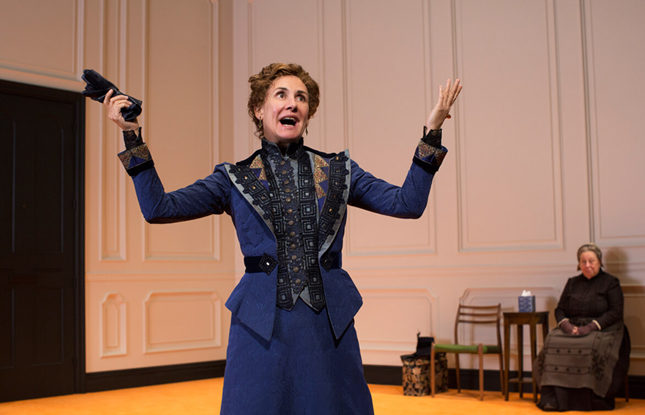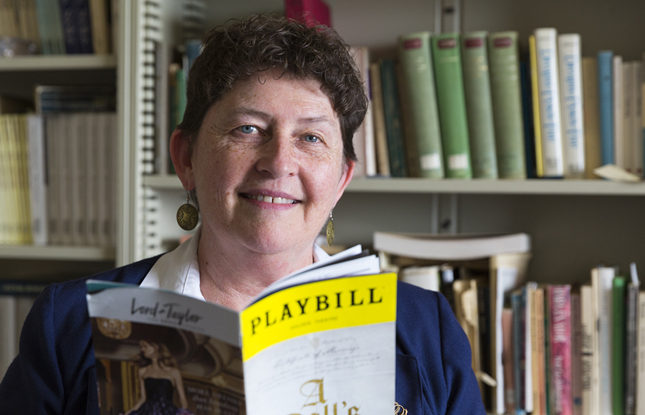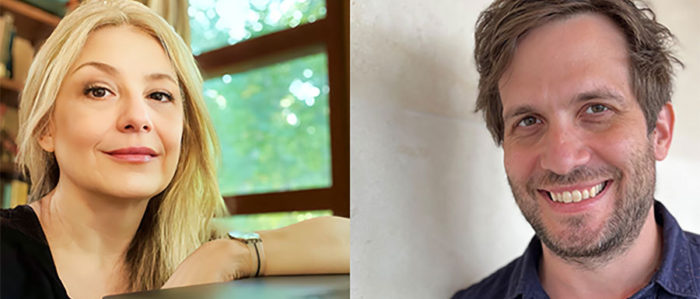In the final scene of Henrik Ibsen’s A Doll’s House, Nora Helmer slams the door to her Norwegian home and walks out on her husband and children.
The move shocked theatergoers in 1879 and left them wondering what the heroine would do next. Scandinavian Studies professor Susan Brantly has helped a contemporary playwright make some educated guesses.
Brantly’s expertise in 19th century Scandinavian literature provided guidance to Lucas Hnath’s A Doll’s House, Part 2, which opened in April on Broadway and is up for eight Tony awards, including Best Play and Best Direction. (The awards ceremony takes place on June 11.)
The play sees Nora returning home 15 years after her abrupt exit, having become a successful author and thriving outside of the confines of marriage. The problem is, her husband never divorced her.
“The plot hinges in large part on legal details,” Brantly says.
At the time, spouses who could prove they had been deserted could file for divorce, Brantly explained to Hnath through a series of emails. But so long as a couple is married, the husband is entitled to all of the wife’s property and earnings — meaning the money Nora has earned on her own legally belongs to her husband.
I’ve spent years amassing this research. It’s really nice to be asked about it.
Brantly also gave Hnath a crash course on the golden age of Scandinavian literature — a period around 1880 known as the “modern breakthrough,” when literature was called upon to bring up social issues for debate, and both men and women weighed in on marriage, morality, sex and more. And she cited Laura Marholm, Victoria Benedictsson and Amalie Skram, who made careers as writers at the time.
“Actually, Nora becoming a writer was very realistic,” she says. “There are real women who did this.”
When Brantly saw the play in late April, she was pleased to see the information she provided put to good use, and struck by its smart and witty approach. “What was lovely was they ended up doing a play that had a postmodern spin,” she says. “It’s not irreverent, but it’s not pious toward Ibsen.”
While significant (the New Yorker even ran a story on it), this is not the first time Scandinavian Studies has lent a hand to the arts and entertainment industry.
Thomas DuBois offered expertise on the Finnish language for The Thirteenth Warrior, a 1999 film based on a Michael Crichton novel and starring Antonio Banderas, while Scott Mellor — Brantly’s husband — appeared on the History’ Channel’s Clash of the Gods series in an episode about Thor. And former Ph.D. student Jackson Crawford served as the Scandinavian consultant for Disney’s hit movie Frozen.
Brantly says being a part of A Doll’s House, Part 2 was a thrill, and she’s happy to see her knowledge extended to the stage.
“I’ve spent years amassing this research,” she says. “It’s really nice to be asked about it.”
UPDATE: Laurie Metcalf won the 2017 Tony Award for Best Performance by an Actress in a Leading Role in a Play for her work in A Doll's House, Part 2.






